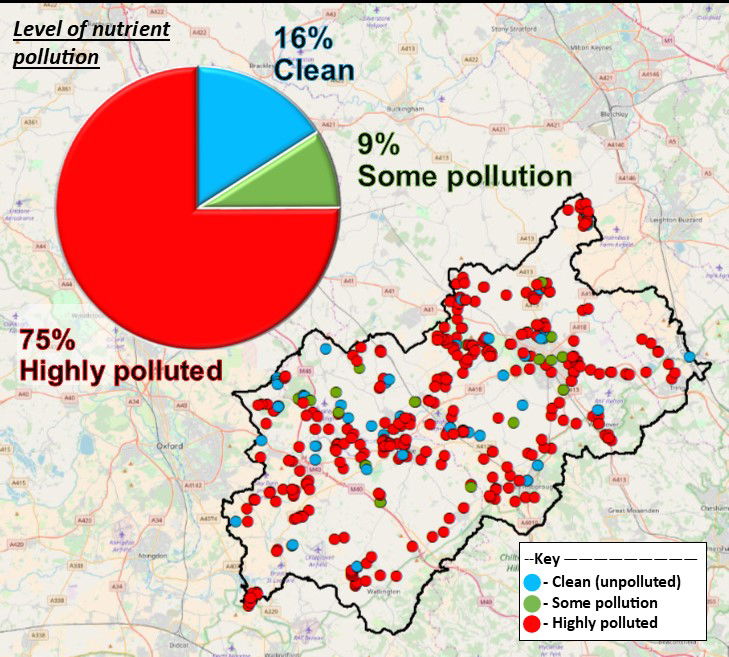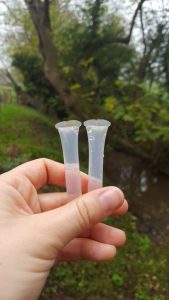Clean Water Quest: where is the clean water in the Thame catchment?
14th August 2018
We need to know where water is polluted, but we also need to know where the clean water is, so we can protect it and extend it. Here’s news from Hannah Worker of River Thame Conservation Trust on the results of the waterblitz earlier this summer

This summer residents, groups and communities were enlisted across the River Thame Catchment to find clean, unpolluted water, where wildlife can thrive.
The River Thame Catchment is an area where there is little information on the water quality of its freshwater landscape. Yet its freshwater habitats, from the biggest lakes to the tiniest trickles, pools and springs, are home to a vast array of plants and animals. It only takes a little pollution to cause the loss of much of this wildlife. With increasing pressures on the freshwater landscape, it is now more important than ever to find the clean water places, those that are free of pollution, where our rarer more sensitive species can flourish.
 Through the Clean Water Quest volunteers used simple test kits to measure the levels of two widespread nutrient pollutants, nitrate and phosphate, in over 450 sites. This included the River Thame, and its many surrounding water bodies as it meanders its way past Aylesbury to join the River Thames at Dorchester-on-Thames.
Through the Clean Water Quest volunteers used simple test kits to measure the levels of two widespread nutrient pollutants, nitrate and phosphate, in over 450 sites. This included the River Thame, and its many surrounding water bodies as it meanders its way past Aylesbury to join the River Thames at Dorchester-on-Thames.


Results show that the catchment’s freshwater environment is heavily impacted, with the majority of sites showing evidence of nutrient pollution. However, despite the many pressures on the landscape, clean water could still be found. 16% of sites were found to be free of both nitrate and phosphate pollution. The clean water was concentrated in the smaller waters, in particular the ponds which made up 72% of the clean water sites. This is because ponds typically have small drainage areas and so can drain from locally clean sources. Whereas streams and rivers drain water from much larger areas with multiple sources of pollution. Clean water could still be found in the running waters, but it was concentrated in the headwaters, particularly where streams rise in semi-natural habitats, such as woodland. Bernwood Forest is a key example of this, with multiple clean ponds and a clean stream.
 The results highlight the importance of the smaller waters to provide clean unpolluted water, essential for much of our wildlife, and how vital it is to extend this clean water network. This can be achieved through clean water pond creation and by working to extend downstream from clean streams and ditches. This can be as simple as creating a rain water fed garden pond or as grand as a creating a large wetland complex. Big or small, all clean water creation is valuable.
The results highlight the importance of the smaller waters to provide clean unpolluted water, essential for much of our wildlife, and how vital it is to extend this clean water network. This can be achieved through clean water pond creation and by working to extend downstream from clean streams and ditches. This can be as simple as creating a rain water fed garden pond or as grand as a creating a large wetland complex. Big or small, all clean water creation is valuable.
The survey was run by the River Thame Conservation Trust and funded by Thames Water. For more information and to view the results please visit the River Thame Conservation Trust website.
